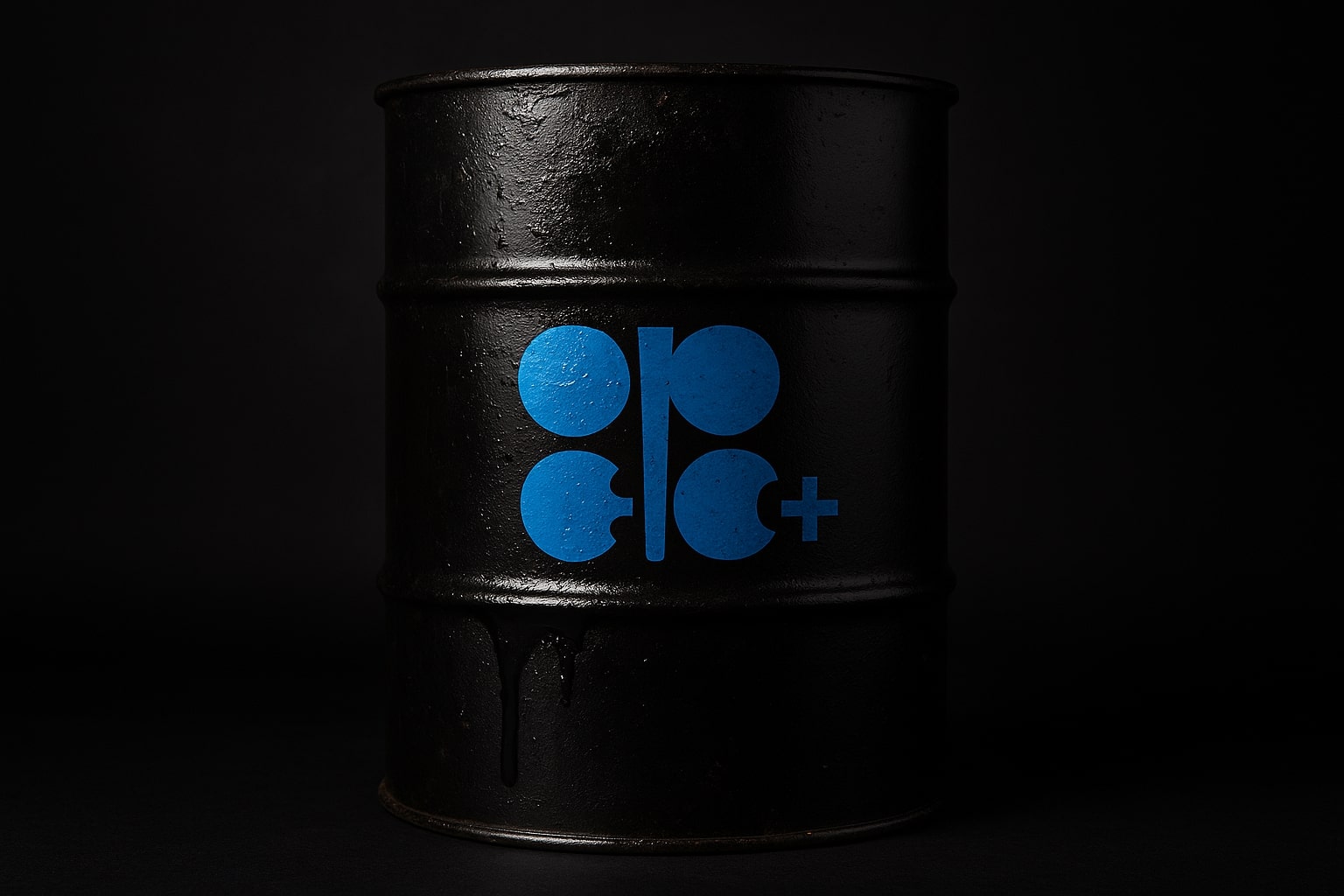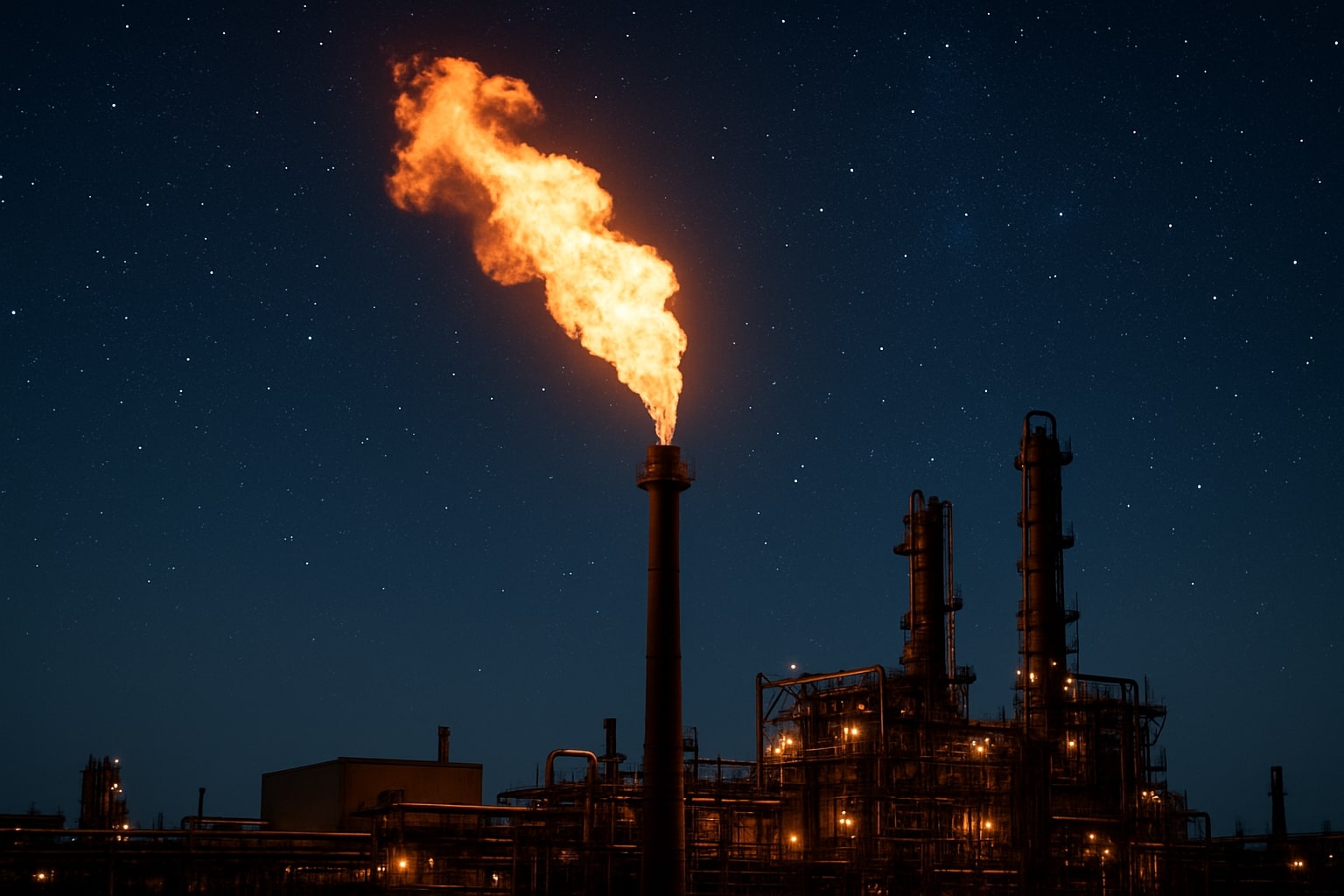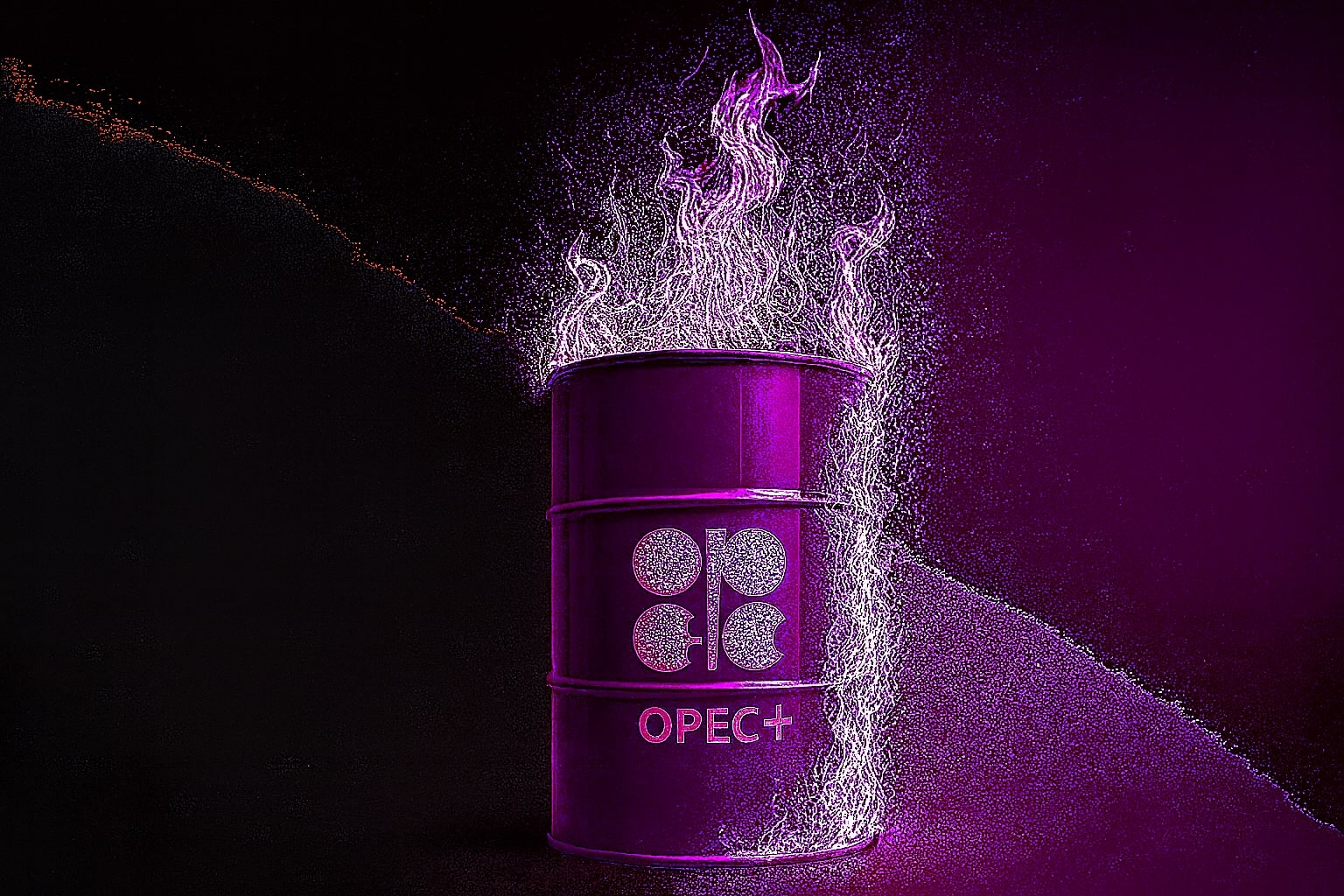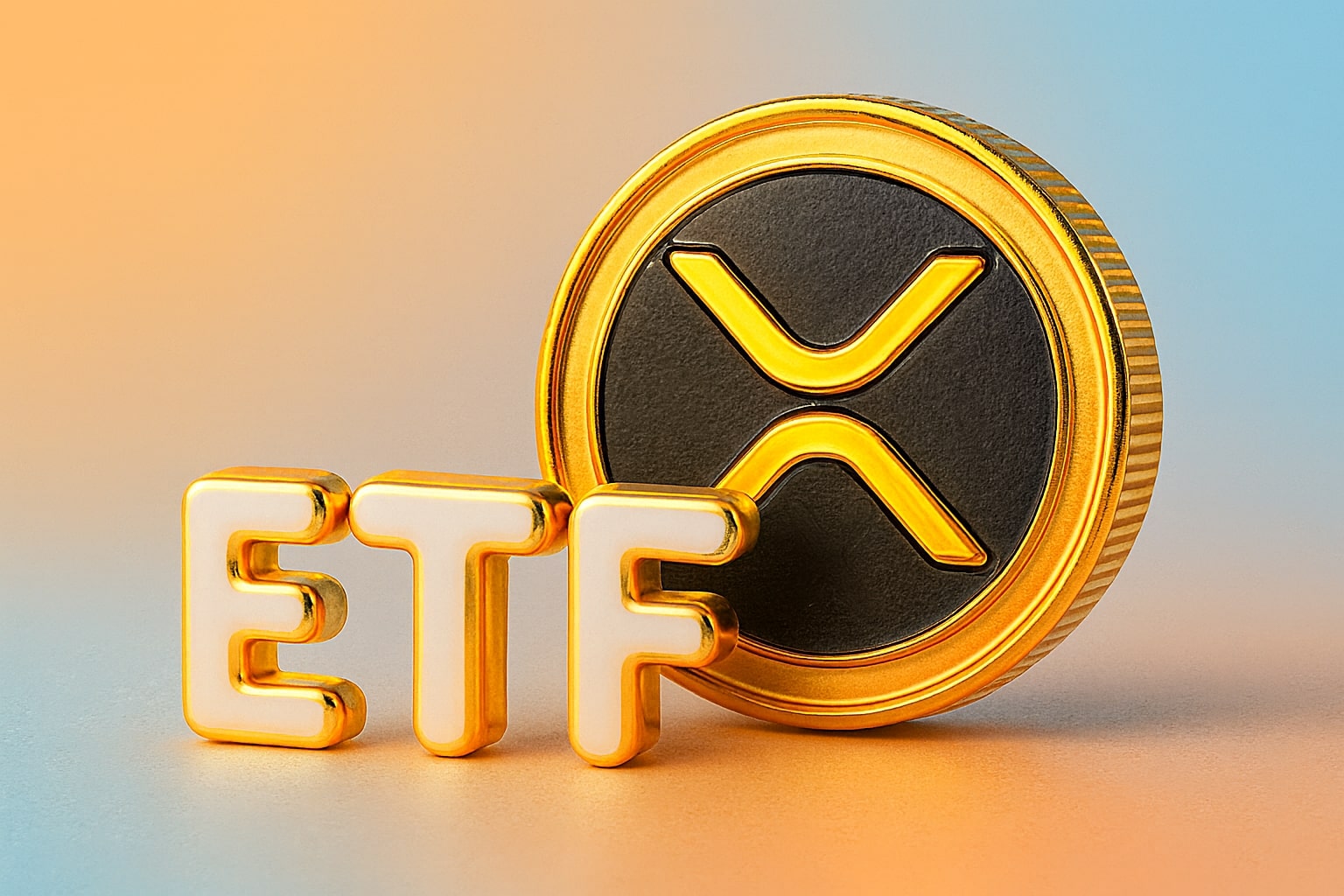
Oil Prices Hold as WTI at $63.57, Brent at $66.48 Await Geopolitical Clarity
Crude markets face tight range as OPEC+ supply builds, U.S. shale retreats, and Trump–Putin summit looms over Russian oil policy | That's TradingNEWS
WTI and Brent Prices React to Supply Shifts and Geopolitical Calculus
WTI Crude (CL=F) closed at $63.57 per barrel, up 1.47%, while Brent Crude (BZ=F) settled at $66.48, up 1.30%. The short-term gains come despite a broader pullback from early June highs, when Brent traded above $70 and WTI neared $68. This week’s rally reflects traders positioning ahead of the upcoming Trump–Putin summit in Alaska, where talks may reshape Russian oil flows, Arctic exploration, and sanctions. ING analysts caution that partial sanctions relief could push prices lower, while escalation or secondary tariffs could fuel a rapid upside breakout. The event risk adds another layer to an oil market already adjusting to OPEC+ supply expansion and shifting demand forecasts.
OPEC+ Supply Strategy Weakens Market Backwardation
The futures curve for both Brent and Dubai shows narrowing prompt premiums, a sign of easing supply tightness. OPEC+ is on track to add more than 2 million barrels per day by September — equivalent to Germany’s annual oil consumption. Global crude runs hit a record 85.6 million bpd in August, up 1.6 million bpd year-over-year in Q3 compared to just 130,000 bpd growth in H1. As post-summer demand cools, the additional barrels from OPEC+ and non-OPEC suppliers in Latin America and Europe are likely to push the market toward surplus, with traders already anticipating softer Q4 pricing.
U.S. Shale Retrenchment Under Price Pressure
The drop in WTI from $70 earlier this year to the $62–$64 range has forced U.S. shale operators to cut back. The EIA expects U.S. crude output to decline in 2026 to 13.1 million bpd from this year’s 13.6 million bpd — the first non-pandemic decline since 2015. With break-even prices near $65 per barrel, shale producers are cutting rigs and delaying projects. The rig count is down nearly 10% year-over-year to 539, while fracking crews have dropped to a four-year low at 167. Capital spending by the top 20 independents has been reduced by $1.8 billion over the past two quarters. Saudi Arabia’s long-term aim appears to be keeping prices in the $60s to force consolidation in the U.S. shale sector.
China Expands Influence Through Murban Supply
China’s state-owned Zhenhua Oil has doubled its daily offtake from ADNOC’s Bu Hasa field from 100,000 to 200,000 bpd. Bu Hasa produces premium Murban crude — low sulfur and high API gravity — ideal for Asian and European refiners. The move strengthens China’s direct upstream-to-downstream integration strategy and signals an ongoing eastward pull in Middle Eastern crude flows. Zhenhua’s first spot Murban delivery via the Dubai Window platform earlier this year was sent to a PetroChina refinery, underscoring the deepening commercial link.
Offshore Drilling Gains Momentum Amid Price Volatility
Borr Drilling Limited (NYSE: BORR) is benefiting from high day rates and utilization despite onshore cutbacks. In Q2, BORR posted net income of $35.1 million on $267.7 million revenue, up 24% sequentially. Adjusted EBITDA rose 39% to $133.2 million, with 22 of 24 rigs active. Year-to-date contracts total 2,584 days of work worth $318 million, securing 84% of 2025 coverage at an average $145,000/day. Additional financing of $200 million boosts liquidity for potential fleet expansion and strategic acquisitions.
Tanker Market Normalization Pressures Earnings
TORM PLC (NASDAQ: TRMD) posted Q2 EPS of $0.58, slightly above forecasts but down from $2.02 a year ago. Revenue fell to $210.3 million from $437.7 million as the tanker market normalized from 2023–2024 highs. Consensus for full-year 2025 sees EPS at $2.84 and revenue near $900 million, but freight rate softening remains a headwind. Shares are down 2% year-to-date, lagging broader indices despite still-healthy fundamentals compared to pre-2023 levels.
Macro Outlook: Balancing Event Risks and Bearish Fundamentals
WTI and Brent pricing in the weeks ahead will hinge on the Trump–Putin talks, OPEC+ output pace, and seasonal refinery demand shifts. Event-driven volatility could spark rallies if sanctions tighten, but without a sustained geopolitical shock or coordinated supply cuts, the market’s structural bias — rising supply, easing demand growth, and U.S. shale restraint — points toward range-bound or softer prices into Q4.
Verdict: Hold with Bearish Bias
With WTI at $63.57 and Brent at $66.48, crude prices sit in the middle of a tightening near-term range. The upcoming Trump–Putin Alaska summit is the wild card — any move toward sanctions relief could see Brent retreat to $63–$64 and WTI back to $60–$61, while fresh escalation could quickly lift Brent above $70 and WTI toward $68.
OPEC+’s planned 2 million bpd supply increase by September, softening refinery runs post-summer, and U.S. shale’s strategic pullback collectively cap upside momentum. At the same time, the market’s heavy event-driven risk premium makes aggressive shorting risky.
For now, a Hold stance is justified, with traders positioned for $60–$68 WTI and $63–$71 Brent until clear signals emerge from geopolitical talks and OPEC+ output adjustments. A decisive break below $60 in WTI would trigger a bearish acceleration toward $56–$57, while a Brent close above $71 would open a retest of $74–$75.
That's TradingNEWS
Read More
-
SCHD ETF Price at $27: Can SCHD’s 4% Yield and 9.15% Dividend Growth Beat High-Yield Covered Call ETFs?
15.12.2025 · TradingNEWS ArchiveStocks
-
XRP ETFs Close on $1B Inflows as XRPI at $10.92 and XRPR at $15.52 Hit 52-Week Lows
15.12.2025 · TradingNEWS ArchiveCrypto
-
Natural Gas Price Forecast: NG=F Holds the $4 Floor as Oversupply Clashes with 2026 LNG Demand
15.12.2025 · TradingNEWS ArchiveCommodities
-
USD/JPY Price Forecast - Dollar to Yen At 155: Yen Strength Builds As BoJ Hike And NFP Collide
15.12.2025 · TradingNEWS ArchiveForex



















